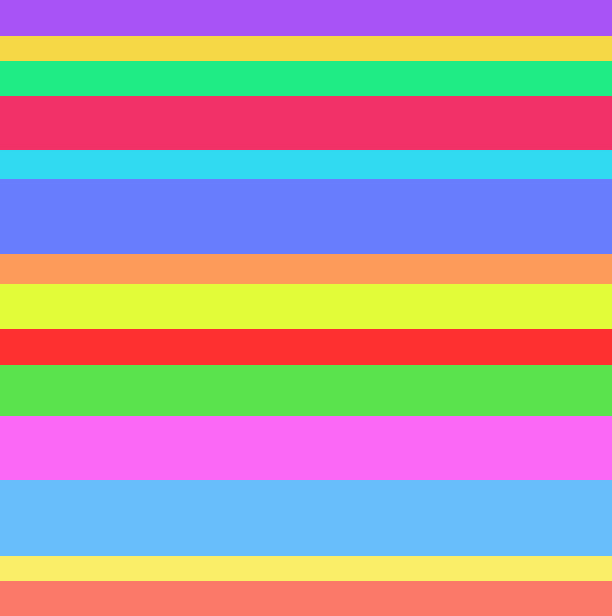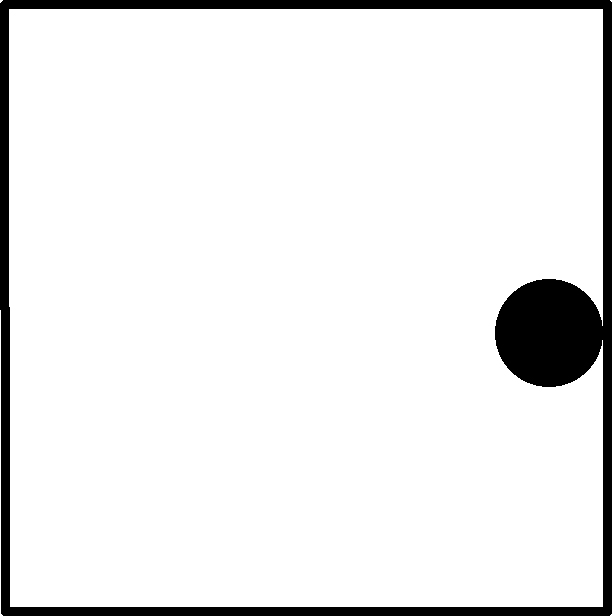Ana Petrović
visual artist
LIFRAM1
5:00 min. in loop, HD video, paper, vellum paper, 2011
LIFRAM1
5:00 min. u loopu, HD video, papir, paus papir, 2011.
Projekcijsko svjetlo koje prolazi kroz mutni papir naočala u skladu sa zvukom stvar igrokaz koji kruži prostorijom. Zamišljen da se istovremeno i vidi i ne vidi unutar prostora u kojemu gledatelj sam za sebe može odlučiti želi li vidjeti što se skriva iza prepreke. Oblici na projekcijskom platnu izgledaju oštro ali preko naočala koje oponašaju vjeđe dobivaju nježne, mekane linije i intenziviraju osjećaj za prisutnost svjetla. Svjetlo istovremeno postaje jače proporcionalno gubitku detalja.
Oduzimanjem, minimaliziranjem osjeta vida dematerijalizirao se film. Preuzeo je ulogu šaptača čulima iz šume apstraktnih slika i zvukova. Neki zvuče poznato, kao da kontekst već poznatog može zalijepiti formu informacije. Rad je konstruirana stvarnost u gotovo tekućoj formi krhke realnosti.
_______________________________________
At first I thought I could simply draw a line under he word medium, bury it like so much critical toxic waste, and walk away from it in a world of lexical freedom. “Medium” seemed too contaminated, too ideologically, too dogmatically, to discursively loaded.
– Rosalind Krauss: Voyage on the North Sea. Art in the Age of the Post-Medium Condition
Načine nadilaženja, interpretacije ili preoblikovanja filmskog medija u umjetničkoj praksi Ane Petrović možemo obuhvatiti terminom “parafilm”, koji se ponekad smatra kategorijom “proširenog filma”. Dok prošireni film upućuje na niz eksperimenata koji premještaju događaj projekcije sa konvencionalnog prikazivanja na jednome ekranu pribjegavajući multipliciranju ekrana i performansu, parafilm označava skup produkcija koje postupcima dubinske analize dispozitiva naglasak stavljaju na njegove materijalne, tehničke ili pak fenomenološke sastavnice: projektor, filmsku vrpcu, projiciranu svjetlost, vrijeme.
Za Hollisa Framptona svaki je fenomen “parafilmski” čim mu je jedan element zajednički s filmom. U tom smislu, izazovi parafilma temelje se na mogućnostima propitivanja brojnih otklona od osnovnih filmskih elemenata.
Na istom tragu, kontekstualizirajući praksu Slobodana Šijana koja se formira «oko filma», Dejan Sretenović govori o «razlaganju kinematografije na njezine konstitutivne elemente koji se osamostaljuju kao autohtona područja filmskog eksperimenta.”
“Parafilm identificira čitav spektar fenomena koje smatramo “filmskima”, ali koji nisu uključeni u tradicionalno definiran filmski materijal” – ističe Jonathan Walley u “The Material of Film and the Idea of Cinema”. Walley parafilm dovodi u vezu s konceptualnom umjetnošću, a ta se veza ostvaruje kada se filmu pristupa kao “ideji”, a ne više kao tehničkoj aparaturi – odnosno dematerijalizirajući ga.
U okviru referencijalnog polja koje se formira radom Light Describing a Cone Anthonija McCalla, kojeg Walley ističe kao jedno od ključnih primjera koncepta parafilma i proširenog filma razvijaju se radovi Ane Petrović, formirajući se kao serija fotografija, fotosekcence, ili knjiga umjetnika / artist-book u strukturi flip booka (daumenkino). Oni su shvaćani kao prostor u kojemu se istražuju granice medija. Osim toga, video Non Visual Film Ane Petrović dovodi oblike medijskog istraživanja do krajnjih konsekvenci podjednako, predmetnosti i recepcije, budući da se radi o filmu koji se gleda zatvorenih očiju, odnosno doživljava ne gledanjem. Ritmičnost svjetlosti i zvuka, eksperimenta na rubu apstrakcije, na tragu je povijesnih avangardnih eksperimenata, poput filma Arnulf Rainer Petera Kubelke.
Ana Petrović svojim radovima pristupa kao oblicima medijskih istraživanja, a manifestiraju u različitim medijima i formatima. Radi se prije svega o interesu za projekciju kao prostor percepcije i sredstvu koje proizvodi optičke senzacije. Stvarajući specifične uvjete i naprave za gledanje, Ana Petrović pažnju usmjerava prema promatraču kao ključnom elementu u procesu recepcije djela, preispitivanjem elastičnosti percepcije pojedinca i stvaranjem senzacija.
O radovima Ane Petrović, Branko Franceschi tvrdi kako “označavaju multimedijalni postupak i napravu koje generiraju čaroliju opažaja projiciranog pokreta kao svjetlosnog traga. Iako su fascinacija filmom i fenomen tromosti oka na kojem je sazdana percepcija pokretnih slika očiti, vizualno istraživanje Ane Petrović u konačnici se referira i na optičku i geštalt umjetnost, odnosno, našu sposobnost da iz apstraktnih predložaka razvijamo narative, a možda čak i jasne mentalne predodžbe.”
U seriji fotografija Bez naslova, koja je strukturirana kao foto sekvenca, autorica bilježi prizor zrake svjetlosti iz projektora. Fotografija podjednako predstavlja minimalističku gestu i interes usmjeren na projekciju kao sredstvo reprodukcije filma. Istovremeno LIFRAM Daumenkino (kino za palac) je artist book kojim autorica artikulira interes za pretpovijest pokretnih slika, a njezino “papirnato kino” inspirirano je upravo “tehnologijom” prvih pokretnih slika.
Ovakvim istraživačkim radovima umjetnica ulazi u prostore medijskog mišljenja i reprezentacije medija, odn. remedijacije, reprezentacije jednog medija drugim, predstavljajući različite kinematičke eksperimente, afirmirajući jedno gotovo rubno umjetničko područje, ističući njegov istraživački potencijal. Na određen način uspostavlja kontinuitet interesa, povezujući prošlo i buduće, odmaknuti od normativne tehnologije filmske produkcije i reprodukcije, ovi radovi, služe se različitim istraživačkim pristupima, putem “naprava za gledanje”, medijima fotografije i videa, kako bi se referirali se na jezik i čaroliju filma.
Branka Benčić, 2016.
A projection light passing through the murky paper of the glasses to the accompanying sound creates a spectacle circulating the room. Conceived to be simultaneously seen and not seen within a space where the viewer can decide for themself if they want to peek behind the obstacle. The shapes on the projection screen look sharp but through glasses that mimic the eyelids they become gentle, soft lines making the viewer intensely aware of the presence of light. The light becomes stronger in proportion to the loss of detail.
By minimizing and subtracting sight, film is dematerialized, assuming the role of whisperer in a forest of abstract images and sounds. Some seem familiar, as if the context of the already known can copy/paste the form of information. The artwork is a construct in an almost liquid form of fragile reality.
___________________________________
Expanded cinema and media research
At first I thought I could simply draw a line under the word medium, bury it like so much critical toxic waste, and walk away from it in a world of lexical freedom. “Medium” seemed too contaminated, too ideologically, too dogmatically, too discursively loaded.
– Rosalind Krauss: Voyage on the North Sea. Art in the Age of the
Post-Medium Condition
Ways of transcending, interpreting, or transforming the film medium in the artistic practice of Ana Petrović can be subsumed under the term “paracinema,” which is sometimes considered a category of “expanded cinema.” While expanded cinema implies a series of experiments transferring the act of projection from conventional single-screen presentation to multi-screen presentation and performance art, paracinema denotes a set of productions employing procedures of deep analysis of the dispositif to highlight its material, technical or phenomenological components: projector, film tape, projected light, time.
For Hollis Frampton, every phenomenon is “paracinematic” if it shares one element with cinema. With that in mind, the challenges of paracinema lie in possibilities of exploring various deviations from the main elements of film. On that note, in contextualizing Slobodan Šijan’s practice revolving “around film,” Dejan Sretenović writes about “deconstructing cinematography down to its constitutive elements, which become independent as autochtonous spheres of film experiment.”
“Paracinema identifies an array of phenomena that are considered ‘cinematic,’ but that are not embodied in the materials of film as traditionally defined” – Jonathan Walley points out in “The Material of Film and the Idea of Cinema.” Walley recognizes a link between paracinema and conceptual art, occurring when film is approached as an “idea” and not so much as a technical apparatus – in other words, when it is dematerialized.
Ana Petrović’s works take their place within the frame of reference formed by the work Line Describing a Cone by Anthony McCall, recognized by Walley as one of the key examples of the concepts of paracinema and expanded cinema. Her works take shape as a series of photographs, a photosequence, or an artist-book in the form of flipbook (daumenkino). They are understood as spaces in which to explore the boundaries of media. Also, Ana Petrović’s video Non Visual Film brings forms of media research to their final consequences in terms of both substance and reception, given that this film is watched with the eyes closed, i.e. experienced by not seeing. The rhythmicality of light and sound, an experiment on the verge of abstraction, follows in the footsteps of historical avant-garde experiments, like the film Arnulf Rainer by Peter Kubelka.
Ana Petrović approaches her works as forms of media research manifesting in various media and formats. They reflect a predominant interest in projection as a space of perception and an instrument for producing optical sensations. In devising specific viewing conditions and contraptions, Ana Petrović shifts the attention towards the observer as the key element in the process of artistic reception, by exploring the elasticity of individual perception and creating sensations.
Branko Franceschi writes that the works of Ana Petrović “denote a multimedia process and contraption generating the magic of perception of projected movement as a trail of light. Despite the obvious fascination with film and the element of persistence of vision, which is the basis of perceiving moving images, the visual exploration of Ana Petrović also addresses optical and gestalt art, engaging our ability to use abstract templates to develop narratives, maybe even clear mental images.”
In the series of photographs Untitled, which is structured like a photo sequence, the author records an image of a ray of light coming out of the projector. The photograph is at once a minimalist gesture and an expression of interest in projection as a means of film reproduction. On a similar note, LIFRAM Daumenkino (cinema for the thumb) is an artist book in which the author articulates her interest in the prehistory of moving pictures, and her “paper cinema” was inspired by none other than the “technology” of the first moving pictures.
Through such experimental works, the artist enters spaces of media thinking and media representation, i.e. remediation, representing one medium through another, demonstrating different cinematic experiments, affirming an almost marginal artistic field, highlighting its experimental potential. In a certain way, she establishes a continuity of interests, connecting past and future. Removed from the normative technology of film production and reproduction, these works use various experimental approaches, by means of “viewing contraptions,” via photographic and video media, in order to refer to the language and magic of film.
Branka Benčić, 2016.



